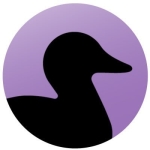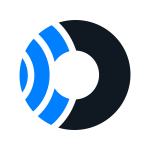What is our primary use case?
My company is a financial and technical enterprise with involvement in healthcare as well. We use Veracode for scanning, utilizing both SAST and DAST approaches. The purpose of static testing is to assess our code for vulnerabilities before deployment. After completing this step and addressing any identified issues, we run dynamic application security testing on the applications we've created to ensure there are no vulnerabilities introduced after the build. These could be issues that arise during the execution of the code, rather than being inherent to the code itself.
Additionally, we are currently considering or in the process of transitioning to Veracode for a specific function known as Software Composition Analysis, which is among the services they offer.
In terms of my use cases, I oversee approximately 200 development teams managing around three to four hundred projects. About 30 percent of these projects are connected to Veracode. Moreover, I manage a user base of over 700 individuals, and many of our build pipelines include immediate SAST scanning during the building process.
We currently use Vericode Cloud, specifically the public cloud. At the moment, I am in the process of deploying two Veracode ISM management servers from their platform. These servers will be responsible for scanning our internal applications that are not exposed to the external world. One significant aspect is that our company decided to transition to the cloud approximately three years ago. Initially, we had 27 data centers scattered worldwide, but now we have reduced that number to five. By the end of this year, we plan to further decrease it to three, and eventually, we will likely have only one or two data centers in the future. However, there are certain things that we cannot migrate to the cloud.
How has it helped my organization?
Veracode's ability to prevent vulnerable code from being deployed into production is excellent. It is considered one of the best scanning tools available. We have conducted several comparisons between Veracode and other products in the market, and Veracode consistently ranks first among those we have tested.
With Veracode, the amount of vulnerable code that gets through is almost negligible. When we run a scan, we don't expect to find any significant vulnerabilities because the SAST usually catches almost everything.
Veracode's policy reporting for ensuring compliance with industry standards and regulations is excellent. It is applicable to us as a multinational company with PCI and HIPAA requirements, and we also engage in government projects. Consequently, we are obliged to adhere to any relevant regulations, which is why we have implemented numerous policies that automatically alert us when any action might potentially violate the established guidelines.
Although Veracode can offer visibility into the application's status at every phase of development, we do not rely on manual penetration testing because we have our own testing team. Instead, we use SAST from the moment our developers start typing the code until the deployment phase.
The visibility has significantly expedited our DevSecOps process. Now that we've integrated Veracode and included it in our build pipelines, we can provide feedback on potential issues and vulnerabilities in their code much more quickly. Our team appreciates and is delighted with this improvement because, previously, we had to wait until the builds were completed, then run DAST and subsequently present them with ten pages of issues, which would take them ten to fifteen days to address. By adopting a left-shifting approach, we've moved the bar further to the left, reaching a point where we can hardly get closer than we are now while they are actively coding. The only way to provide them with even faster information about potential vulnerabilities in their code would be to offer feedback as they type and when they push the code to the main build. Unfortunately, as of now, there are no tools available that can accomplish this.
Veracode has been a great benefit because it allows developers to log in to their code and examine the specific vulnerabilities they were informed about. Typically, there is a description of why and how the vulnerability occurred, along with guidance on how to resolve it. Veracode significantly aids our organization in fixing flaws.
Veracode helps our developers save time. While I cannot provide a precise estimate of the actual time saved, I can explain that the more we shift the SAST to the left, meaning running it as soon as the developers enter their code, the more time we can save. This is because when developers have the code fresh in their minds, they have a better understanding of what they wrote and how to fix any vulnerabilities based on the provided descriptions. On the contrary, if we shift the SAST further to the right when the code is already completed and possibly being reviewed by a different developer, it will take more time for them to understand the original code and the vulnerability's context. Thus, the original developer could have fixed the vulnerability in a shorter period of time. Additionally, considering the learning curve for new developers down the line, it becomes even more crucial to have the original developer fix the vulnerability promptly. If we only run DAST without SAST, we might end up with a long list of ten thousand potential vulnerabilities, which would require weeks of work just to address them all sequentially from the start.
Veracode has had a significant impact on our organization's security posture. When I first arrived, we were only connected to about three different teams. Originally, we only had seven or eight teams. Now, we have almost two hundred teams. One of the most significant changes is that even with those seven or eight teams, only two or so were using Veracode. However, we gradually added more teams as they came on board. Subsequently, there was a major organizational change, and Teams were divided into smaller, more compact, and agile units, which is the new trend in the industry. As a result, the teams are now much smaller, more diverse, and more agile. We are now connected to 70 percent of the two hundred teams. We have expanded considerably, but there is still more to achieve. The efficiencies have improved significantly, and the developers are satisfied with this progress. This shift is excellent for security because we were usually known as the "no people," but now we are transforming into the "yes" and "let me help you with that" people.
Veracode has reduced the cost of our DevSecOps, just from the 25 percent time-saving. The most expensive factor is not computers or technology, but rather, it's people. If I were to add together all of the salaries of the individuals and compare the amount of time saved to the total salary cost, I could cover the expenses for my infrastructure twice over a year.
What is most valuable?
The most valuable feature is the SAST capability and its integration into the Veracode pipelines.
What needs improvement?
From what we have seen of Veracode's SCA offering, it is just average. The SBOM is adequate, but it's essentially the same as what everyone else is doing. In terms of SCA, they are about average compared to other systems. Therefore, I would like to see some improvements.
SAST, DAST, and SCA in a single pane of glass would be a good upgrade to Veracode.
We are a Jira and Confluence shop and I would like to have a really good integration with those tools.
We have a ticketing system that not too many companies have ever heard of. In fact, I had never heard of it before coming here. Instead of using a well-known industry standard like ServiceNow, we use a ticketing system called Cherwell, which also has an open API. Having an API for the ticketing system would be really beneficial.
I would prefer if Veracode offered more options for licensing, such as a pipeline or project license instead of a user license. Currently, I have around seven hundred users, but I manage fewer projects. Therefore, I believe it would be more beneficial and efficient for me if Veracode could adopt a project-based pricing model. In reality, I have multiple teams working on various projects simultaneously. Pricing based on the number of projects I have up and running would be more suitable for my needs compared to the number of developers working on a particular project.
One thing that I would like to be able to do is to receive a daily summary of the emails I currently receive. With numerous ongoing projects, constant scanning occurs, resulting in a high volume of emails about what is being processed. I believe it would be helpful if Veracode could create a daily summary of these emails. This way, I can easily track the number of actual emails I receive without having to go through each one individually. As of now, I already have 65 emails from Veracode, specifically regarding the processes that ran today.
For how long have I used the solution?
I have been using Veracode for three years.
What do I think about the stability of the solution?
I have almost never seen any downtime with Veracode.
What do I think about the scalability of the solution?
The scalability is excellent because we utilize Veracode on their cloud infrastructure, and we handle dozens of projects daily.
How are customer service and support?
I've never had a problem that didn't get solved, or at the very least, get immediate feedback. So, I would say their technical support is very good.
How would you rate customer service and support?
Which solution did I use previously and why did I switch?
I previously utilized a solution provided by IBM in my previous organization, but later we transitioned to a company named WhiteHat Security. The reason for this switch was that when we conducted a scan using the IBM solution, it returned a result of ten thousand vulnerabilities. It was my responsibility to review the vulnerability report and clear out any false positives. However, this task was extremely time-consuming, taking nearly forty hours to complete. The reason behind the prolonged effort was the spidering scan performed by the IBM solution, which continually traversed different pages through various links, leading to repetitive errors that required matching and deduplication. Out of the ten thousand vulnerabilities, approximately a thousand were legitimate, and the scanning capability was limited to DAST. To address these challenges, we migrated to WhiteHat Security. With WhiteHat's scanning process, the number of vulnerabilities was reduced significantly to around six or seven hundred. Their approach outperformed my manual efforts in identifying duplicates and further eliminated non-duplicate vulnerabilities that were caused by the same piece of code.
When I joined my current company they were already using Veracode.
How was the initial setup?
The initial setup was straightforward. We connected to the Veracode cloud, so essentially, we are operating on their public cloud. Whenever we run any process, we send our code to them. They execute it, and we receive feedback from the execution.
I have not been involved in the initial deployment of Veracode, but I have been involved in deploying the pipelines, creating and building out the ISMs, and also administering users. Recently, we moved and integrated it with our single sign-on. Since we're using Okta, we performed the integrations, and now everyone connects through Okta.
What about the implementation team?
We utilized a value-added reseller, and they provided integrators themselves. Additionally, we have direct connections with Veracode. So, my understanding is that we likely received assistance from both the value-added reseller's team and Veracode.
We have monthly calls with Veracode. I work directly with engineers and have access to their email addresses and telephone numbers. This way, whenever there's a problem or an issue, I can easily reach out to someone. Additionally, I receive almost daily emails regarding recent developments and occurrences.
What was our ROI?
We have seen a return on investment. We have two hundred teams, and approximately 70 percent of them are integrated with Veracode, running pipeline scans on about 50 percent of those. The remaining teams conduct manual SAST scans instead of using pipeline scans. We have likely saved 25 percent or more of the time it takes developers to go from a startup project to the final build and deployment, just by addressing vulnerabilities.
What's my experience with pricing, setup cost, and licensing?
We pay based on the number of developers working on a particular project.
Which other solutions did I evaluate?
Our organization evaluated four or five different solutions before selecting Veracode. The issue with the others was that they only offered either SAST or DAST, but not both, whereas Veracode provides both.
What other advice do I have?
I would rate Veracode an eight out of ten. Veracode needs to improve its SCA capabilities to become a market leader rather than a market follower. Another noteworthy area they are starting to focus on is container security. I assume they will compete with Laceworks and other companies in that domain, which makes it worth keeping an eye on.
Veracode's software build of materials feature is integrated into the software composition analysis, which we are currently exploring for utilization. However, at this time, we are using a third-party product for that purpose.
Veracode's false positive rate is very low based on what we have found. However, there are instances where it becomes confused, identifying one type of vulnerability when it is actually a different type that appears similar. Nevertheless, we always conduct verifications before approving a list of vulnerabilities for the developers to address. We thoroughly go through and verify at least most of the different types to ensure their validity. My team verifies the false positives, so the developers almost never see them. Because we don't encounter many false positives, we don't spend a lot of time fine-tuning policies. We'll make some minor adjustments, and it should mostly resolve the issue until we encounter a different type of false positive. Then, we'll have to address it separately.
One of the other things that I have observed recently is a tool called Veracode Fix. We have not examined it yet, but it's worth considering. Normally, we avoid implementing too many automated fixes because sometimes they end up causing even more issues, particularly when dealing with legacy code while transitioning to Veracode. Allowing automation could potentially lead to the application being permanently shut down, especially in cases like Software Composition Analysis and Software Bill of Materials where we may need to upgrade to a different or less vulnerable, open source piece of code. If we upgrade without ensuring compatibility with our existing setup, it could break numerous things. Hence, we previously attempted to use automated fixes, but the outcome was negative, and we have decided never to repeat that mistake. Therefore, it's something we plan to explore, but we need to ascertain if there have been any changes in that type of setup.
For someone who wants to use Veracode but is concerned about the cost, the amount of time saved, especially on the SAST side of things, makes it worthwhile.
We are a multi-cloud organization primarily using AWS, with 25 percent of our infrastructure on Azure and a smaller portion on Google Cloud. We are currently using Google services only because we are a Google shop rather than a Microsoft Office shop. As a result, all of our emails are managed through Google, and we rely on Google Docs and other related tools.
There are four architects and a group of DevSecOps professionals who work directly with the development and operations teams. They form the security component of the organization and are responsible for operating Veracode on a daily basis. Their primary role is to assist the developers in integrating Veracode into their workflows, setting up pipelines, and collaborating with them when vulnerabilities are identified. They are available to help the developers understand why they received a vulnerability and guide them on how to address and eliminate it.
The only maintenance we will have to deal with is related to the ISM servers. These ISM servers are actually controlled by our company. There is an on-prem link to the Veracode cloud. When they conduct their scan, they access the server, which acts as a jump box. This enables them to scan our internal applications that do not have direct access to the outside world.
Veracode is a good Dynamic Application Security Testing tool, but it excels as an outstanding Static Application Security Testing solution for organizations that prioritize serious security measures.
Which deployment model are you using for this solution?
Public Cloud
If public cloud, private cloud, or hybrid cloud, which cloud provider do you use?
Other
Disclosure: My company does not have a business relationship with this vendor other than being a customer.



















